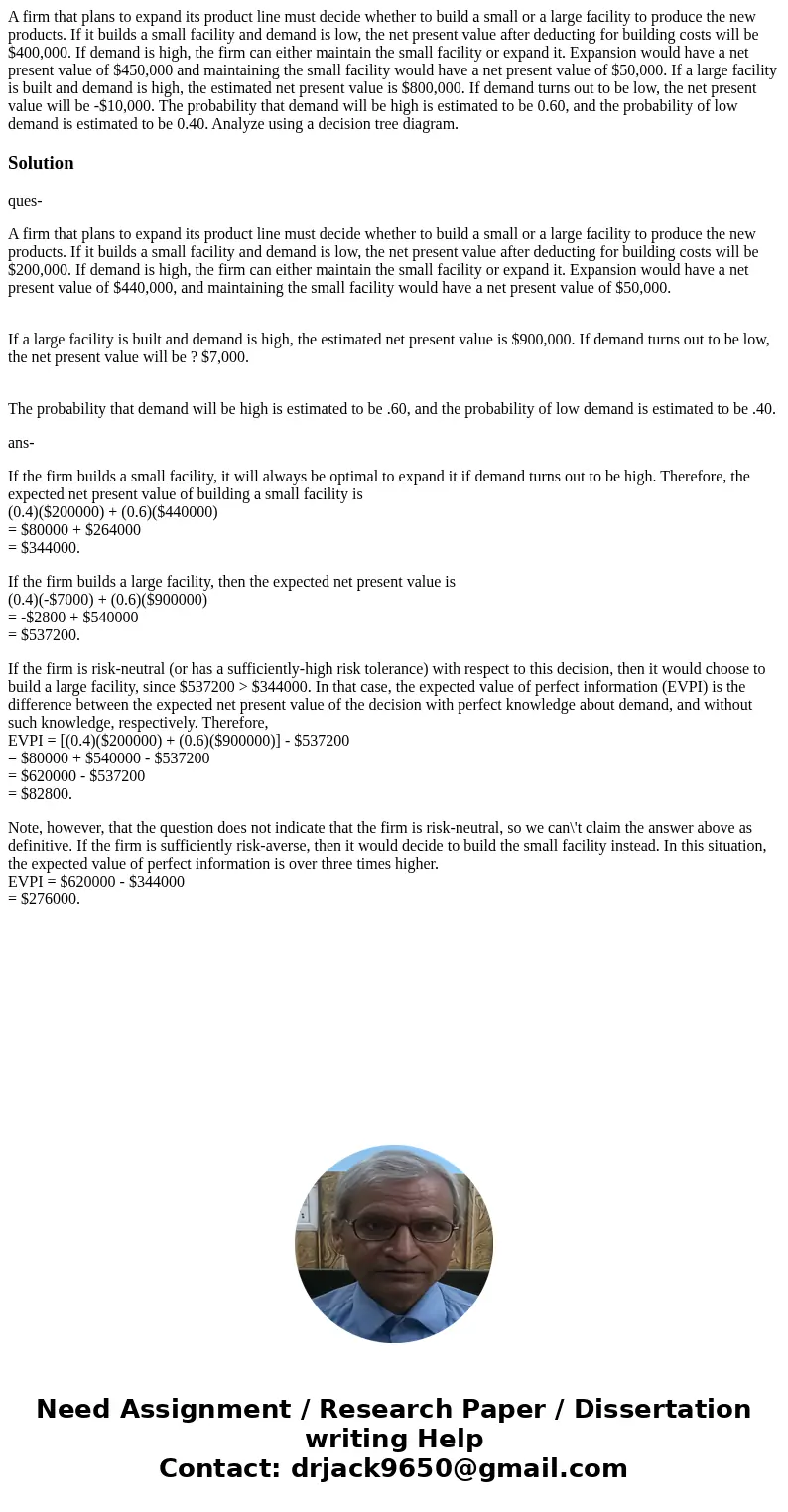A firm that plans to expand its product line must decide whe
A firm that plans to expand its product line must decide whether to build a small or a large facility to produce the new products. If it builds a small facility and demand is low, the net present value after deducting for building costs will be $400,000. If demand is high, the firm can either maintain the small facility or expand it. Expansion would have a net present value of $450,000 and maintaining the small facility would have a net present value of $50,000. If a large facility is built and demand is high, the estimated net present value is $800,000. If demand turns out to be low, the net present value will be -$10,000. The probability that demand will be high is estimated to be 0.60, and the probability of low demand is estimated to be 0.40. Analyze using a decision tree diagram.
Solution
ques-
A firm that plans to expand its product line must decide whether to build a small or a large facility to produce the new products. If it builds a small facility and demand is low, the net present value after deducting for building costs will be $200,000. If demand is high, the firm can either maintain the small facility or expand it. Expansion would have a net present value of $440,000, and maintaining the small facility would have a net present value of $50,000.
If a large facility is built and demand is high, the estimated net present value is $900,000. If demand turns out to be low, the net present value will be ? $7,000.
The probability that demand will be high is estimated to be .60, and the probability of low demand is estimated to be .40.
ans-
If the firm builds a small facility, it will always be optimal to expand it if demand turns out to be high. Therefore, the expected net present value of building a small facility is
(0.4)($200000) + (0.6)($440000)
= $80000 + $264000
= $344000.
If the firm builds a large facility, then the expected net present value is
(0.4)(-$7000) + (0.6)($900000)
= -$2800 + $540000
= $537200.
If the firm is risk-neutral (or has a sufficiently-high risk tolerance) with respect to this decision, then it would choose to build a large facility, since $537200 > $344000. In that case, the expected value of perfect information (EVPI) is the difference between the expected net present value of the decision with perfect knowledge about demand, and without such knowledge, respectively. Therefore,
EVPI = [(0.4)($200000) + (0.6)($900000)] - $537200
= $80000 + $540000 - $537200
= $620000 - $537200
= $82800.
Note, however, that the question does not indicate that the firm is risk-neutral, so we can\'t claim the answer above as definitive. If the firm is sufficiently risk-averse, then it would decide to build the small facility instead. In this situation, the expected value of perfect information is over three times higher.
EVPI = $620000 - $344000
= $276000.

 Homework Sourse
Homework Sourse